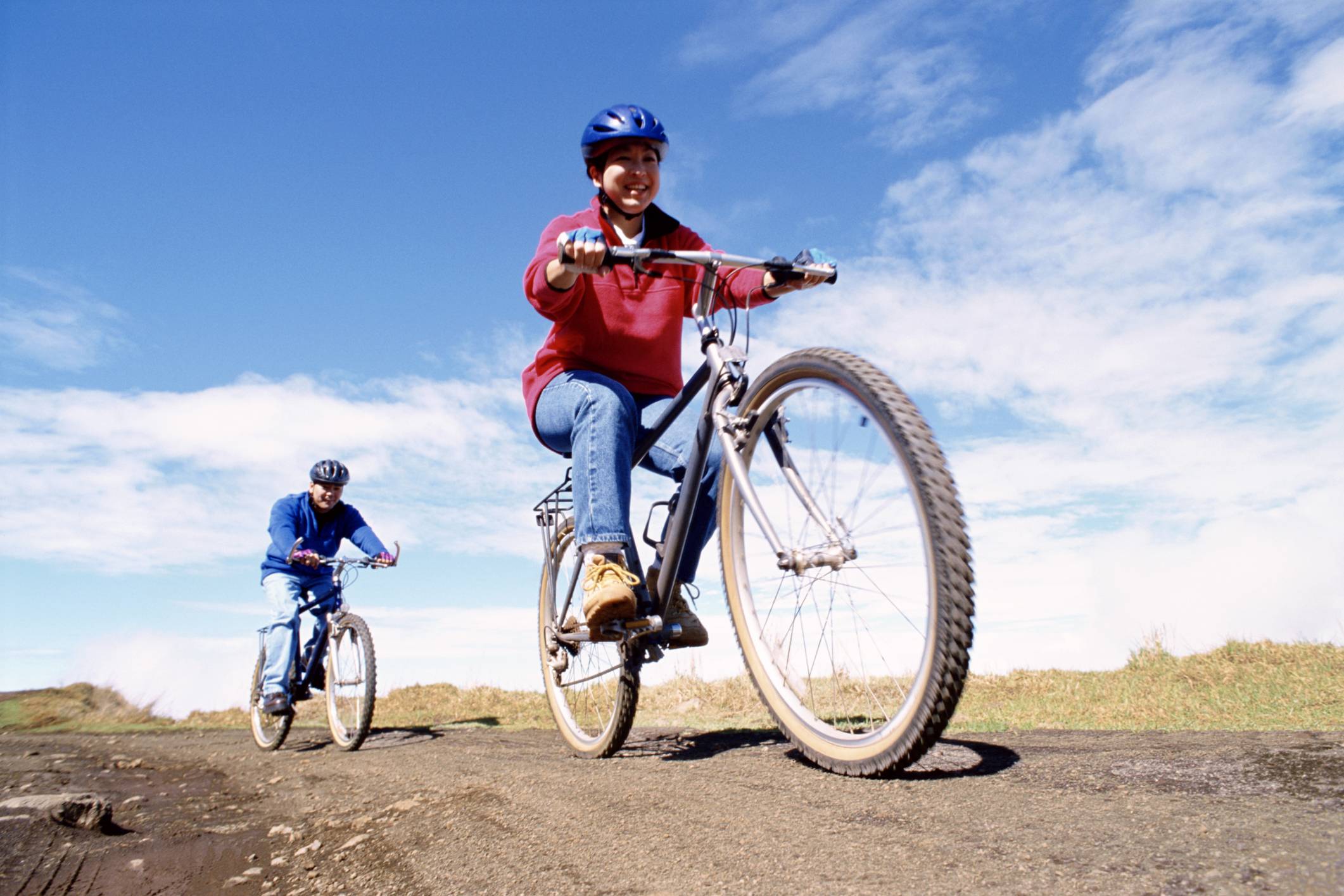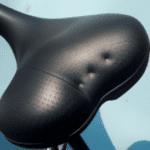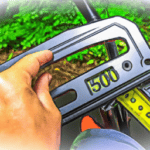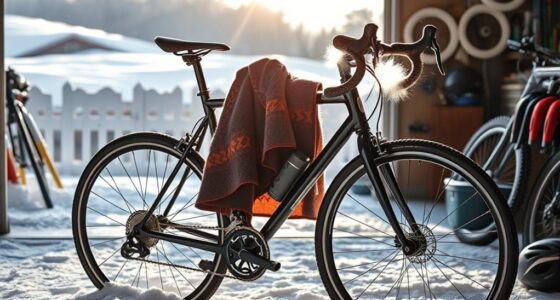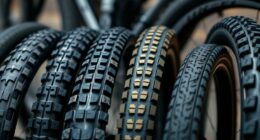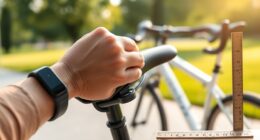Discussions have arisen about the potential for bicycle riding to lead to prostate cancer, yet the prevailing agreement is that no direct connection exists between them. Nevertheless, biking, especially for long durations or on a saddle that doesn’t fit well, can lead to temporary numbness or discomfort in the area between the anus and genitals, known as the perineal area, and might result in short-term inflammation of the prostate.
These issues often arise due to pressure on the perineum from the saddle, which can compress nerves and blood vessels, potentially leading to discomfort or numbness. In some cases, long-term cyclists may experience an elevated level of prostate-specific antigen (PSA), a protein produced by the prostate gland that can indicate prostate cancer. However, this elevation is typically temporary and may not indicate an increased prostate cancer risk.
To minimize any potential risks associated with cycling, consider the following recommendations:
- Choose a comfortable saddle: Select a saddle designed to reduce pressure on the perineum, such as those with a cut-out section or a noseless design.
- Adjust your bike properly: Ensure that your bike is correctly fitted to your body, with the saddle at the right height and angle. This will distribute your weight more evenly, reducing pressure on sensitive areas.
- Change positions frequently: Shift your weight and adjust your position on the saddle regularly to alleviate pressure on the perineum.
- Wear padded cycling shorts: Padded cycling shorts can provide additional cushioning and support, reducing pressure on the perineal area.
- Take breaks: Take regular breaks during long rides to stand up, stretch, and relieve pressure on the perineum.
In summary, there is no established direct link between bicycle riding and prostate cancer. However, cyclists should take precautions to minimize pressure on the perineal area and maintain overall health. If you have concerns about prostate health, consult your healthcare provider for personalized advice and recommendations.

When Bill Barbour, a 63-year-old avid cyclist, was diagnosed with prostate cancer, he was worried about the effects of his treatments on his cycling. He loves cycling but did not want to give up his passion. So he sought advice from a fellow cyclist undergoing prostate cancer treatments. The doctor advised that Barbour change the shape of his bicycle seat to prevent pressure on the nerve. He also urged Barbour to consult a physician for further information.
Long Distance Cycling Increases Prostate Cancer Risk
Men should consult their doctor if they’re concerned about the possible risks of long distance cycling. Although it’s still too early to determine if cycling increases the risk of prostate cancer, regular medical checkups can help detect the disease early. Cycling is also a great way to exercise the upper body and can help keep you fit. Cycling without a helmet may not be recommended. But if your bike is properly adjusted, you can still reap the benefits of cycling.
The study found an association between cycling and prostate cancer, but there’s no evidence for a direct causal link. It’s possible that cycling can injure the prostate and cause a rise in PSA. When the prostate suffers trauma or pressure, PSA is released into the blood. While it’s unclear exactly how cycling causes this to happen, it’s important to keep the pressure and trauma to a minimum. For cyclists, there are several ways to minimize the stress and trauma to the prostate.
The study sampled 498 men, and found that three-fifths of them had prostate cancer. This number increased after the researchers adjusted for age and gender. A surgeon in Scotland has advised men to cycle even if the risk of prostate cancer is high. However, it’s important to note that the study was small and statistically insignificant. In addition, the study was not conducted on a random sample. The study also relied on Internet responses from cyclists who were over 50.
While previous research has suggested a correlation between cycling and ED, a study at the University College London found no evidence of any association between the two. However, cycling time increased the risk of prostate cancer in men over 50. However, men who cycled more than 8.5 hours a week were more likely to develop prostate cancer. That doesn’t necessarily mean cycling causes erectile dysfunction, but it’s worth taking the time to make sure you’re healthy before starting an exercise program.
While more studies are needed to determine if long distance cycling raises the risk of prostate cancer, it’s important to note that this is only one factor. Cycling does raise PSA levels, which is a screening test for prostate cancer. This may help men detect prostate cancer earlier, but the study was small and the number of participants was low. The average age of the men in the study was fifty-six years old, and 36 of them developed the disease. That compares to the 2.3 percent incidence among men of that age in a comparable population.
Intensive Cycling Increases PSA Levels
Intensive cycling has been associated with increased PSA levels, which may be a precursor to prostate cancer. The friction caused by the bike’s saddle may increase the level of this marker. It is important to note that cyclists may not always be aware of their health status. If you are concerned about your prostate health, talk to your doctor about alternative exercises. You should also wear a helmet and exercise carefully.
If you are considering getting a PSA test, abstain from cycling for several days before the test. The authors of the Australian study suggest abstinence of at least 24 hours. A bicycle saddle with cut-outs may help decrease the pressure on the perineum region. The test should be scheduled a minimum of 48 hours before the cycling session. If you are planning to cycle right before your PSA test, you should use a low-pressure seat.
In men, intense cycling raises PSA levels in the urine and serum. It can also increase the level of fPSA in the blood. While the results are preliminary, the findings suggest that cycling can cause prostate cancer. For women, however, intensive cycling is an excellent way to stay fit and prevent prostate cancer. You can even ride a bike on a treadmill for a few minutes at a time to build up your stamina.
The majority of studies that examined intensive cycling found that the exercise did increase PSA in men. The average increase was nine percent and 0.23ng/ml. This is well above the recommended upper limit of 4.0ng/ml. Despite the potential risk, the findings are not conclusive. If you are planning to start cycling, make sure to talk to your doctor first. They may have other treatment options available.
Other reasons for elevated PSA are inflammation and old age. Other causes are prostate diseases. Chronic inflammation causes the PSA to increase. However, men who regularly cycle can reduce the PSA by cycling for a short period of time. While intensive cycling is a common form of exercise, it is not considered to be an effective treatment for prostate cancer. While intense cycling can help men lose weight, it can also increase the risk of developing prostate cancer.
Change the Shape of Your Bicycle Seat to Relieve Pressure on The Nerve
According to the Department of Health and Human Services, men with prostate problems should avoid prolonged cycling or other physical activities that put pressure on the perineum. However, there are ways to reduce pressure and irritation on the perineum, such as by wearing padded shorts, standing on the pedals, or changing the shape of your bicycle seat. The right bike seat will keep the blood flowing to the penis and prevent irritation or numbness in this area.
The best bicycle seats can help relieve pressure on the nerve that causes prostate cancer by supporting the sit bones and not putting too much pressure on the soft tissue. These seats should be properly fitted and can be adjusted to suit your frame size. Depending on the size of your frame, you might need to adjust the size of the frame to relieve pressure on the nerve. In this case, you may want to consult a bike seat fitter.
If you have a flat, poorly adjusted seat, it can affect the blood flow to the prostate. You can make cycling easier by adjusting the shape of your bicycle seat to make it less curved. You can also change the position of your pedals by using special pedals and levers to reduce the pressure on your pelvic floor. If you suffer from chronic prostate problems, visit your physician and get a proper diagnosis. While a urinary tract infection can cause similar symptoms, prostate issues may require treatment with a different medicine.
Cycling can also impact your sex life. Some people experience numbness in the penis and erectile problems. Additionally, cycling puts pressure on the nerve that causes prostate cancer. This may result in a painful erection or a damaged urethra. The same applies to a man with an enlarged prostate. If you’re concerned about your penis, a padded saddle might be the best option.
When you change the shape of your bicycle seat, you can reduce the pressure on the perineum and improve the sensation. The correct shape of the seat is also an important part of recreational therapy. Bicycle seats that are too low or too high can put pressure on the perineum, causing prostate cancer. Bicycle seats with a more upright shape reduce pressure on this nerve.
Consult Your Primary Care Physician About Cycling and Prostate Cancer
If you’re thinking of starting a rigorous cycling program but are worried about prostate cancer, it’s a good idea first to consult your primary care physician. Urologists can help you with a full prostate exam, including PSA testing and fertility tests. This baseline health information will help you decide whether cycling is a good choice for you. Other things to keep in mind before starting a cycling program include wearing a helmet and taking care to protect your upper body.
Although no studies directly link cycling to prostate cancer, some have found a possible association between cycling and the risk of developing the disease. Although the cause-and-effect relationship is not yet clear, it is believed that cycling may injure the prostate and lead to increased PSA levels in the blood. Trauma, pounding, and constant pressure on the prostate can also cause PSA levels to rise. For these reasons, it’s important to minimize the pressure on the prostate when cycling. This can be accomplished by incorporating effective techniques to reduce pressure on the prostate when cycling.
A PSA increase can also be caused by certain urologic procedures. Digital rectal examinations (DREs) may elevate PSA levels for a short period. Some providers suggest blood be drawn for PSA prior to the procedure. Cycling may also raise PSA levels due to seat pressure. It is important to discuss any potential risks with your primary care physician before starting any new cycling program. The risk is minimal and may even be low for you.
Regular cycling can improve insulin sensitivity and decrease levels of growth cytokines, which can be precursors to certain types of urologic cancer. Additionally, regular cycling can strengthen your immune system by increasing the number of natural killer cells and lymphocytes in your body. Furthermore, cycling may help prevent the development of advanced prostate cancer in men who have prostate cancer. If you have any concerns, consult your primary care physician about cycling and prostate cancer.
